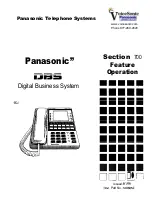
2-7
62-11848
2.3.3
Hot Gas Solenoid Valve (HGS1)
HGS1 is normally closed and prevents discharge gas from entering the evaporator. The valve opens to allow hot
gas refrigerant to be delivered from the compressor to the evaporator during heat or defrost modes.
2.3.4
Condenser Pressure Control Valve (HGS2)
The condenser pressure control valve (or condenser closing valve) is a normally open valve that is powered when the
condenser pressure control switch (HP2) is closed. With the solenoid coil de-energized, the valve is in the cool mode
and the compressor discharge gas is delivered to the condenser. In the cool mode, heat is removed from the air inside
the truck body and rejected to the surrounding air. With the solenoid coil energized, the valve is in the heat mode and
the compressor discharge gas is diverted to the evaporator and rejected to the air inside the truck body.
2.3.5
Compressor
The compressor withdraws refrigerant gas from the evaporator and delivers it to the condenser at an increased pres-
sure. The pressure is such that refrigerant heat can be absorbed by the surrounding air at ordinary temperatures.
2.3.6
Receiver
Liquid refrigerant from the condenser is delivered to the receiver. The receiver serves as a liquid reservoir when
there are surges due to load changes in the system; as a storage space when pumping down the system and as a
liquid seal against the entrance of refrigerant gas into the liquid line.
NOTE
If the receiver king valve is not equipped with a service access port, install a charging connection (Car-
rier Transicold P/N 40-60059-02) and (2) clamps (Carrier Transicold P/N 34-60019-02) in the liquid
line before continuing with leak checking or charging instructions. (Refer to
.)
2.3.7
High Pressure Switch (HP1)
High pressure switch (HP1) is a normally closed switch which monitors the system for high pressure and shuts
down the unit when pressure rises above a predetermined setting. For HP1 settings, see
.
2.3.8
Condenser Pressure Control Switch (HP2)
Condenser pressure control switch (HP2) is a normally open switch which closes to signal the microprocessor to
activate the condenser fan. HP2 also cycles the condenser pressure control valve (HGS2), in addition to the con-
denser fan, in order to maintain discharge pressure for heating capacity. For HP2 settings, see
2.4
EVAPORATOR SECTION
The evaporator assembly consists of an evaporator fan, evaporator coil, thermostatic expansion valve, defrost ter-
mination thermostat, low pressure switch, and a compressor pressure regulating valve.
2.4.1
Thermostatic Expansion Valve (TXV)
The thermostatic expansion valve (TXV) is an automatic device which controls the flow of liquid to the evaporator
according to changes in superheat of the refrigerant leaving the evaporator. The thermal expansion valve main-
tains a relatively constant degree of superheat in the gas leaving the evaporator regardless of suction pressure.
Thus, the valve has a dual function: 1) automatic expansion control and 2) preventing liquid from returning to the
compressor. For TXV superheat settings, see
.
2.4.2
Compressor Pressure Regulating Valve (CPR)
The compressor pressure regulating valve (CPR) is installed on the suction line to regulate the suction pressure
entering the compressor. The CPR valve is set to limit the maximum suction pressure. For CPR settings, refer to
2.4.3
Evaporator Coil
The evaporator is of the tube and fin type. The operation of the compressor maintains a reduced pressure within
the coil. At this reduced pressure, the liquid refrigerant evaporates at a temperature sufficiently low enough to
absorb heat from the air. Air movement over the evaporator is provided by an electric fan.
2.4.4
Low Pressure Switch (LP)
The low pressure switch is a normally closed switch which signals the microprocessor to shut down the unit when
the system is outside the low pressure limit. For LP settings, refer to
.















































